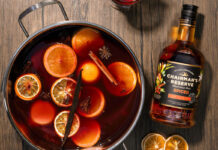Category deserves same attention as others, firms say

THE thirst for low and no-alcohol drinks in pubs and restaurants doesn’t look like being quenched any time soon.
A combination of factors – from the lower drink drive limit to an increased focus on healthier options – means a growing number of consumers are seeking low and no-alcohol options at the bar.
Stocking a selection of reduced alcohol and alcohol-free options is therefore essential. But the focus on low and no-alcohol drinks shouldn’t stop there.
The ‘perfect serve’ should not be limited to alcoholic drinks.
Drinks firms say operators who really want to maximise sales should pay as much attention to reduced ABV and alcohol-free options as they do to other drinks categories.
Stephan Kofler, Krombacher UK sales and marketing director, advised licensees to take a considered approach.
“There’s no point stocking a no/low [alcohol] range then putting them at the bottom of the fridge and forgetting about them,” he said.
“The market is growing for these drinks so be creative with promotion in venues and on social media.”
Presentation of low and no-alcohol options is “vital”, according to Kofler, who said the ‘perfect serve’ is not just for alcoholic drinks.
“Just because it’s no/low [alcohol] doesn’t mean it shouldn’t be presented in the proper way,” he said.
“It still needs to be poured perfectly, and, where required, the right glassware is essential.”
These sentiments were echoed by Sami El Hakiem, trading manager for beer and cider at Molson Coors, who said that although there is now a “historic” level of choice in the category, many alcohol-free styles are “under-represented” in the on-trade.
Advising licensees to promote their low and no-alcohol range via a separate section on a drinks menu and point of sale material, El Hakiem said staff training also plays a crucial role in boosting sales of alcohol-free and low-ABV drinks.
Education is key to establishing the alcohol-free drinks category.
“Education is crucial to establishing alcohol-free drinks as a genuine category rather than an afterthought in the on-trade,” said El Hakiem.
“By prioritising staff training, outlets can make sure their teams understand the heritage and story behind no and low-alcohol brands, so they can encourage customers to branch out and discover something new.”
The importance of ensuring consumers are aware of the low and no-alcohol options available was underlined by Jerry Shedden, on-trade category and trade marketing director at Heineken, who said there is clear consumer demand for reduced ABV and alcohol-free drinks.
“15% of consumers say they would visit pubs more often if there were better non-alcoholic drinks available,” said Shedden.
“It’s important to review your range and ensure you are stocking options to suit all your customers, including those looking to moderate their alcohol consumption or abstain completely.”



















